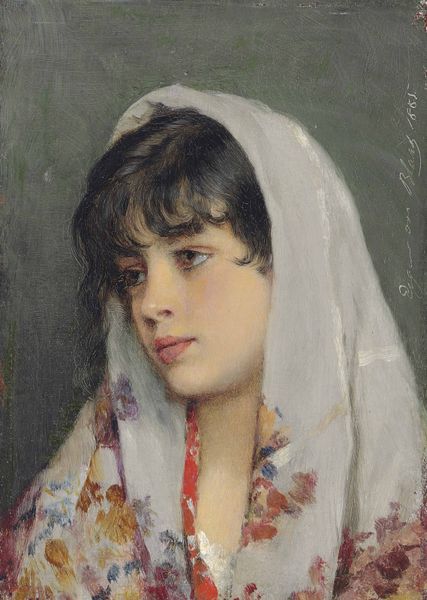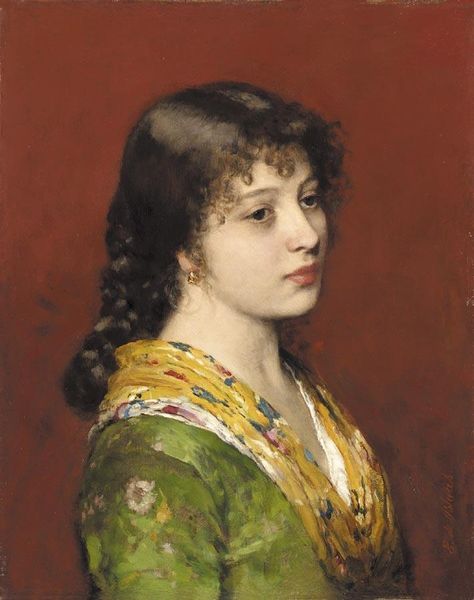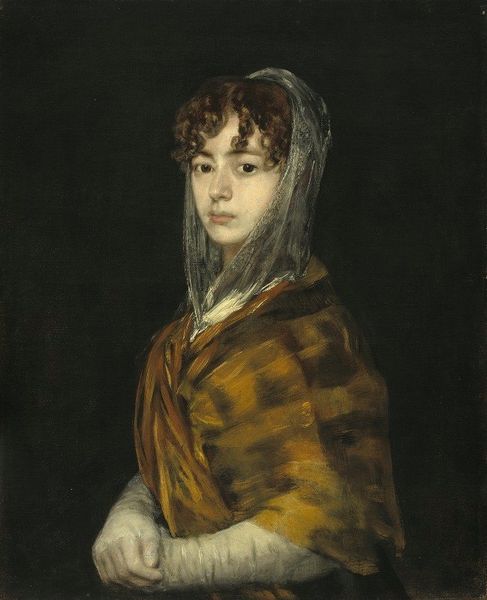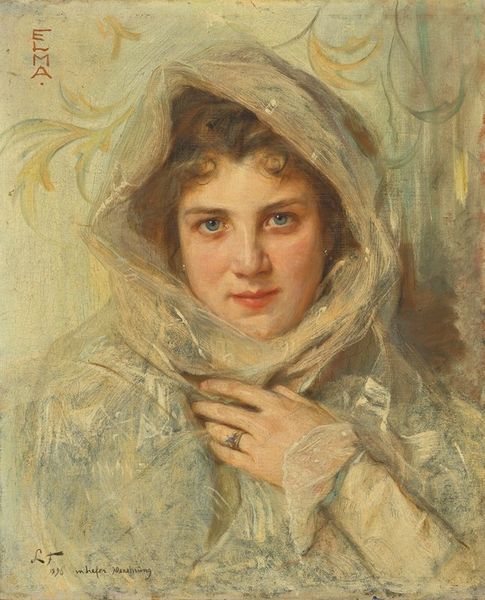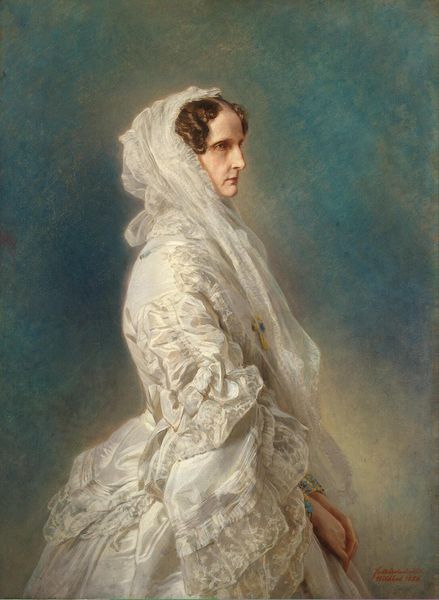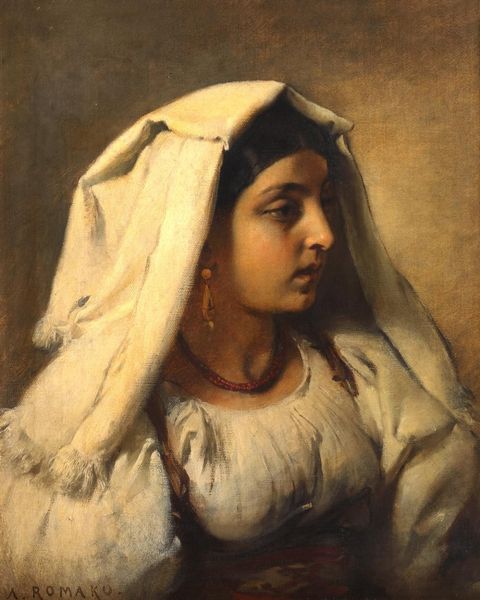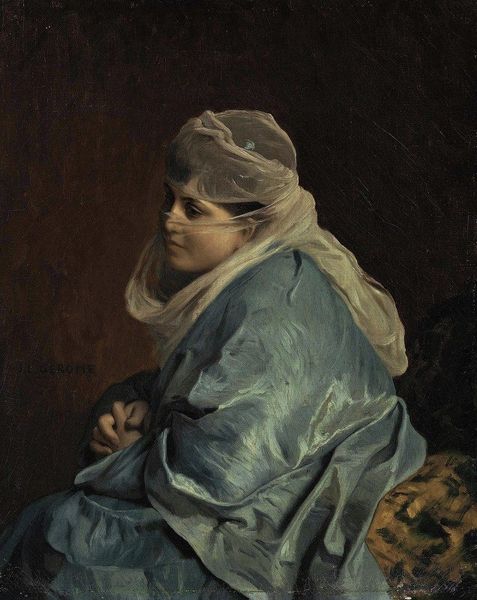
watercolor
#
portrait
#
impressionism
#
charcoal drawing
#
watercolor
#
orientalism
#
portrait drawing
#
facial portrait
#
academic-art
#
portrait art
#
fine art portrait
#
realism
Dimensions: height 650 mm, width 530 mm
Copyright: Rijks Museum: Open Domain
Curator: Let’s take a look at Cesare Biseo's "Bust of an Oriental Woman," created around 1880. Biseo was known for his detailed travel illustrations. This watercolor, I think, exemplifies his skills in portraying different cultures. Editor: My first thought is of its stillness. There's something very direct about her gaze, almost confrontational. And yet, the muted palette makes it feel…contained. It's as if she’s daring you to intrude. Curator: The artist employed the Orientalist style here. Can you read what sort of implications it brings with it? How do you think an artist captures another culture's essence on canvas, or if that is even achievable without distortion? Editor: Well, "Orientalist" definitely raises an eyebrow these days, doesn't it? We have to ask ourselves, is Biseo genuinely trying to understand and represent, or is he exoticizing? It's easy to see the potential for objectification… And maybe she feels it, that defiance in her eyes I saw might actually be annoyance, haha. Curator: Perhaps that reading is fair, but consider also that such representations, while filtered through a Western lens, fueled broader public interest in other cultures, leaving lasting influence on aesthetics and design. And her garments and expression suggest more dignity than outright allure, no? What do you make of her head covering, for example? Editor: The way that drapery is rendered...so precise. It’s almost architectural! Like he’s trying to understand not just the woman but also the texture, the fabric, and the very construction of her identity. Though, framing her within that cloth makes me wonder—is she revealing herself, or is the covering itself the object of scrutiny? Curator: Exactly. She's almost framed by it. As for the gaze, in some societies, the headscarf and averted gaze were conventional signs of modesty, although here that has become subverted somewhat, by way of direct engagement with the presumed onlooker. In light of our discussion, the piece's legacy appears richer and complex. Editor: Agreed. You know, getting up close to this, you can almost feel Biseo wrestling with these contradictions, his intention lost between his brushes. A painting becomes an unintentionally layered historical record then.
Comments
No comments
Be the first to comment and join the conversation on the ultimate creative platform.


